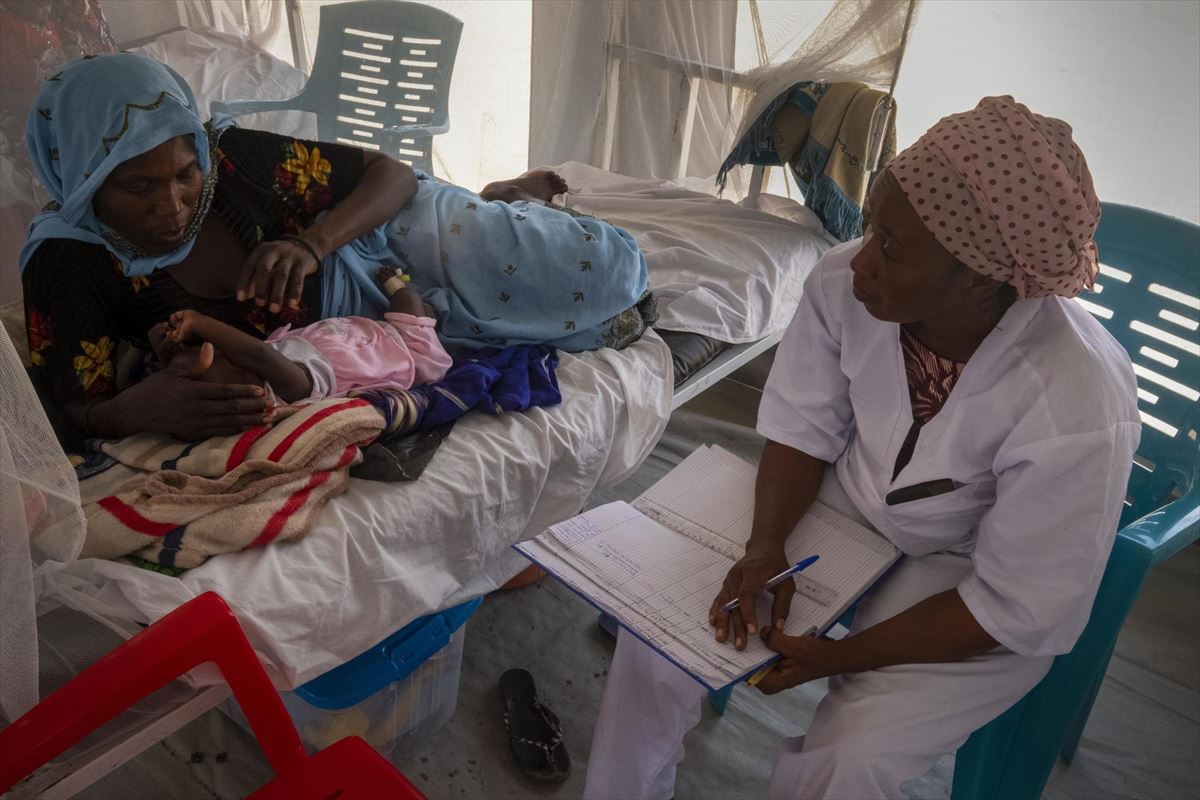After twelve months of large-scale fighting between the army and the paramilitary Rapid Support Forces (RSF), the end of the war seems far away. The NGOs warn that Sudan is facing “one of the worst global crises in recent decades” and ask the world to stop “looking the other way.”
Sudan marks the first anniversary of a bloody war between the two countries this Monday Military and Paramilitary Rapid Support Forces (RSF), a conflict that has collapsed 25 million peopleabout half the population, in a serious humanitarian crisis which threatens to lead to a large-scale famine, while there are no signs that the periodic contacts between the parties will lead to a peace agreement.
The conflict broke out on April 15, 2023 after months of tensions between the military and the RSF – now declared a terrorist group by Khartoum – over the latter’s process of reintegration into the armed forces, reflecting a power struggle between the two groups within the armed forces. framework of the unstable transition process that emerged after the overthrow of Omar Hasan al Bashir’s regime in 2019.
The RSF’s reintegration process was an important point of a agreement signed in December 2022 to form a new civilian government and reactivate the transition, which was seriously damaged by another military coup in October 2021 that led to the overthrow of the Prime Minister of Unity, Abdullah Hamdok. However, talks between the head of the army and the president of the Sovereign Transitional Council, Abdel Fattá al Burhan, and the leader of the RSF and until then his ‘number two’, Mohamed Hamdan Dagalo, alias ‘Hemedti’, led to tensions. which caused delays in the formation of said government and eventually open conflict that caused massive destruction in the country.
No signs of resolution
Despite international efforts to achieve rapprochement between the parties, including contacts brokered by the United States and Saudi Arabia, the positions of the military and the RSF remain distant, with no firm commitments to even allow the safe delivery of aid to the population those limited humanitarian operations.
The end of the war therefore seems far away, especially because of the statements of Al Burhan and ‘Hemedti’, who continue to give priority to the military route. In fact, the head of the army recently stated that the armed forces will continue their offensive until control of “every point” of Sudanese territory is regained, stressing that they will not hand over power to “traitors” and that those who have not supported this The military will play no role in the political future.
10 million displaced people
The war has displaced more than ten million people – more than 8.5 million internally displaced persons and 1.8 million refugees in the region – prompting the United Nations High Commissioner for Refugees (UNHCR) to confirm that both Sudan and neighboring countries ‘face one of the biggest problems’. and the world’s most complex displacement crises.”
According to UN Women, “women and children are bearing the brunt of the crisis,” with 19 million children in school outside schools and more than a hundred reports about it Sexual violencea figure that does not reflect the extent of the cases that occurred in the context of the conflict.

In this line, World Vision Director in Sudan, John Makoni, has stated that “Sudan is currently possibly the worst place in the world for a child to live, due to the enormous number of boys and girls affected by the conflict, but also due to the various physical and emotional challenges they face. youth is literal hungry, abused and traumatized for what he experiences and witnesses,” he lamented.
The ongoing conflict is reflected in the fact that thousands of people continue to flee the country, including an average of 1,800 people arriving daily in South Sudan, which was already facing its own crisis before the conflict and is currently under “growing pressure” from these refugees. flows.
The crisis has also had consequences for Chada country that has received “the largest flow of refugees in its history”, mainly to poorly communicated areas near the border with Sudan, causing these people to settle in makeshift camps that are “overcrowded” and do not have adequate hygiene conditions, as detailed by Mur Sarrado.
Refugees have also moved to the Central African Republic in search of safety. (CAR), Egypt and Ethiopiaa country that was already home to one of the largest refugee populations in Africa, leading the international community to warn that the lack of support for these countries could ultimately destabilize the situation in the region.
The onegés ask to activate humanitarian aid and “stop looking the other way”
However, the greatest impact of the crisis is borne by the population still on Sudanese territory, which risks becoming “the world’s largest hunger crisis”, the Executive Director of the World Program warned in early March (PMA), Cindy McCain, who emphasized that “millions of lives and the peace and stability of an entire region are at stake.”
Also Doctors Without Borders (Doctors Without Borders) has insisted that Sudan is facing “one of the worst global crises in recent decades” and has warned that the African country is facing “a colossal catastrophe”. That is why he has emphasized that “urgently providing safe access to humanitarian aid is a matter of life and death for millions of people.”
The director of the non-governmental organization Norwegian Refugee Council (NRC) in Sudan, Will Carter has stated that “a year since the start of the war in Sudan, civilians have suffered from hunger, mass sexual violence, large-scale ethnically motivated killings and executions,” but that “the world” continues to look the other way. “
Source: EITB
I’m Wayne Wickman, a professional journalist and author for Today Times Live. My specialty is covering global news and current events, offering readers a unique perspective on the world’s most pressing issues. I’m passionate about storytelling and helping people stay informed on the goings-on of our planet.



